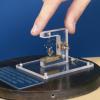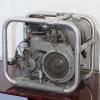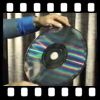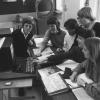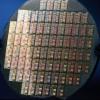Shining discs
Presentation of the videodisc
The Videodisc and Video2000, technological tour de forces, were no guarantee of success. The breakthrough of the compact disc was the result of research collaboration and good marketing strategies.
Until the 1960s, the NatLab operated relatively autonomously within Philips. Spectacular products such as the 1972 Videodisc sometimes came about quite unexpectedly. Research on moving image and sound systems for educative purposes formed the basis for Videodisc, which could hold up to 45,000 images, no less than a 30-minute film.
Philips contacted the Music Corporation of America, now Universal, and explored the American market via its in 1978 purchased Magnavox. No breakthrough occurred, however. The biggest competition came from the cheaper VHS video system that JVC had introduced two years earlier.
Together with Sony, Philips went on the offensive with Video 2000. Again the two electronics giants lost, now on price and content. Nonetheless, their collaboration opened the doors for a new sound carrier, the compact disc (CD), the ‘Videodisc without video’. The CD was promoted by artists from music company Polygram, a joint venture between Philips and the German Siemens.
The combination of strategic collaboration between competitors and a closer internal connection with the Philips product divisions turned the CD into the most successful Philips product of the 1980s.
 Previous Story
Next Story
Previous Story
Next Story
How to cite this page
Frank Veraart, 'Shining discs', Inventing Europe, http://www.inventingeurope.eu/story/shining-discs
Sources
- Hans Peek e.a: Origins and Successors of the Compact Disc, Springer, 2009
- Marc de Vries, 80 Years of Philips Research at the Philips Natuurkundig Laboratorium, 1914-1994, Pallas, Amsterdam, 2005
- Marcel Metze, Kortsluiting. Hoe Philips zijn talenten verspilde, SUN Nijmegen, 1991





